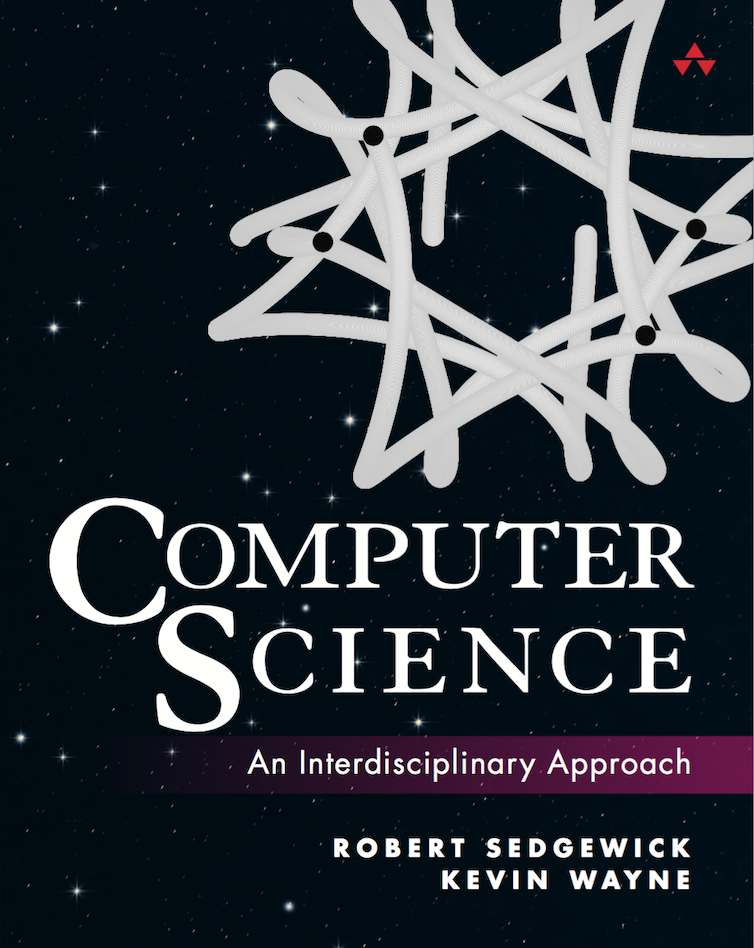Course Materials
This page provides access to
various materials for use in teaching and learning from the book
An Introduction to the Analysis of Algorithms, including
lecture slides,
a sample schedule, assignments, and exams.
Along with a MOOC or certificate course
(see tabs at bottom left), it is
appropriate for use by instructors as the basis for a "flipped" class
on the subject, or for self-study by individuals.
Flipped class.
If you are an an instructor teaching the analysis of algorithms, an effective way for you to teach the material in a typical college class is to adhere to a weekly cadence, as follows:- Each week, send an e-mail note to all students in the class that briefly describes assignments for that week (lectures, reading, and problem sets). The e-mails used in the most recent offering at Princeton are accessible in the table below; please feel free to edit them and use them in your own class.
- Students watch the lectures at their own pace, do the reading and work on the problem sets (each lecture ends with a few suggestions for assignments, which instructors typically tailor to their own needs).
- Occasional "class meetings" may be scheduled for discussion of the material, reviews for exams, informal interaction with students, and any enrichment material you may wish to cover.
Self-study.
An effective way to learn the material on your own is to play the lectures on some regular schedule, do the associated reading, and attempt to solve some of the assigned exercises on your own. If you get stuck on a particular exercise, find some others in the book or on this website, or try to solve some of the problems given in the lectures without looking at the solutions there. In the future, we plan to add more exercises with solutions to this booksite, but that is work in progress.While some of the reading material may be difficult for a typical undergraduate to master on such a quick pass through, a substantial fraction of the coverage is elementary, and the lectures provide a firm basis for understanding the key concepts.
| WEEKLY ASSIGNMENT | LECTURE VIDEOS | LECTURE SLIDES |
|---|---|---|
| AofAweek0.txt |
0. Cardinality Estimation
0.1 Introduction 0.2 Exact cardinality count 0.3 Probabilistic counting 0.4 Stochastic averaging 0.5 Refinements 0.6 Final frontier
|
AA00-Cardinality.pdf |
| AofAweek1.txt |
1. Analysis of Algorithms
1.1 History 1.2 Approach 1.3 Quicksort 1.4 Resources |
AA01-AofA.pdf |
| AofAweek2.txt |
2. Recurrences 2.1 Computing 2.2 Telescoping 2.3 Types 2.4 Mergesort 2.5 Master Theorem 3. Generating Functions
3.1 OGFs 3.2 Solving recurrences 3.3 Catalan numbers 3.4 EGFs 3.5 Counting with GFs |
AA02-Recurrences.pdf |
| AofAweek3.txt
|
4. Asymptotics 4.1 Standard scale 4.2 Manipulating expansions 4.3 Asymptotics of finite sums 4.4 Bivariate asymptotics
|
AA04-Asymptotics.pdf |
| AofAweek4.txt
|
5. Analytic Combinatorics 5.1 The symbolic method 5.2 Labelled objects 5.3 Coefficient asymptotics 5.4 Perspective
|
AA05-AC.pdf
|
| AofAweek5.txt
|
6. Trees 6.1 Trees and forests 6.2 BSTs 6.3 Path length 6.4 Other types of trees
7. Permutations 7.1 Basics 7.2 Sets of cycles 7.3 Left-right minima 7.4 Other parameters 7.5 BGFs and distributions
|
AA06-Trees.pdf |
| AofAweek6.txt
|
8. Strings 8.1 Bitstrings with restrictions 8.2 Languages 8.3 Tries 8.4 Trie parameters
9. Words and Mappings 9.1 Words 9.2 Birthday problem 9.3 Coupon collector problem 9.4 Hash tables 9.5 Mappings
|
AA08-Strings.pdf
|
|
|
|
|
|
Review Problem Set
|
|
|




